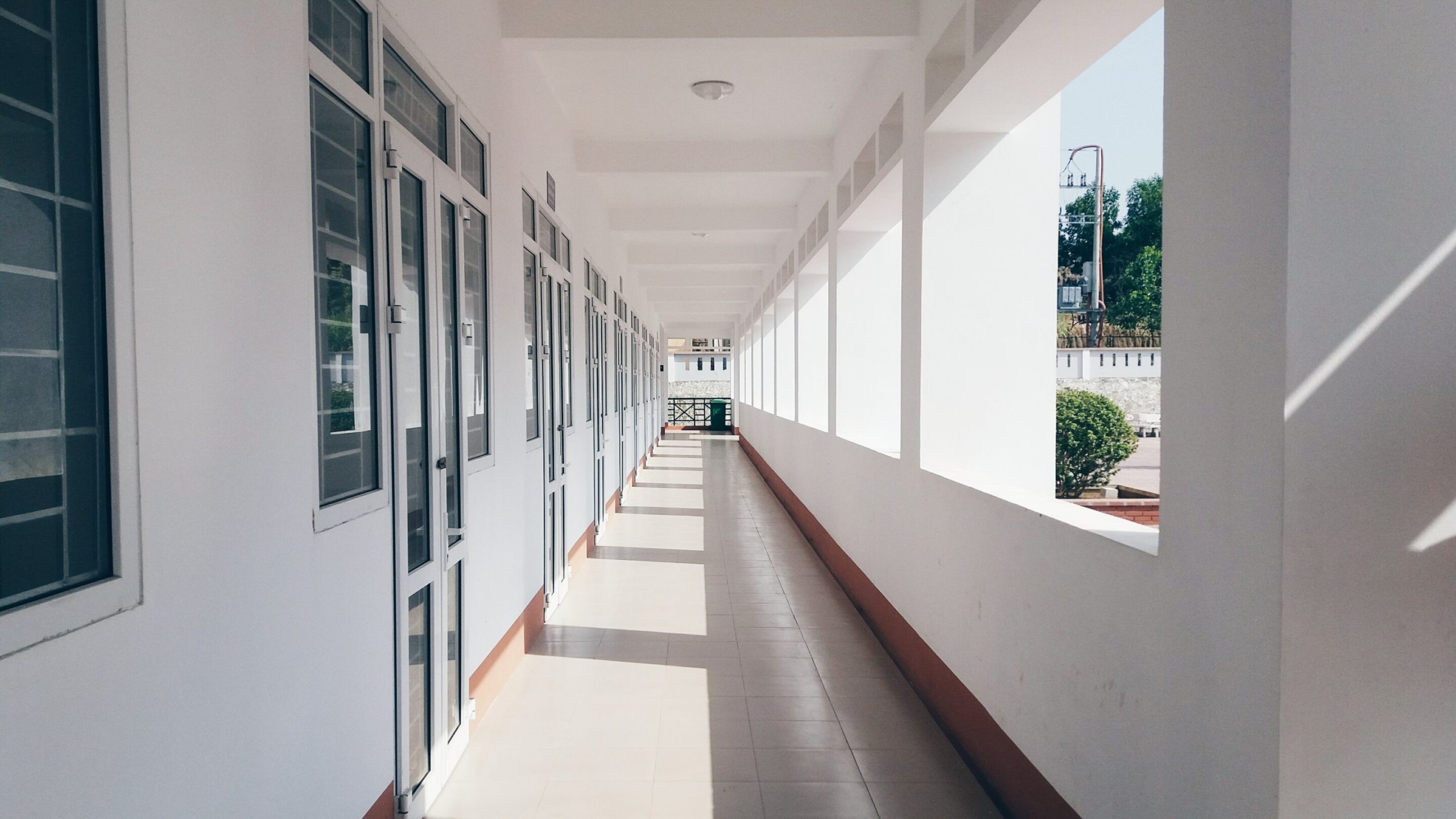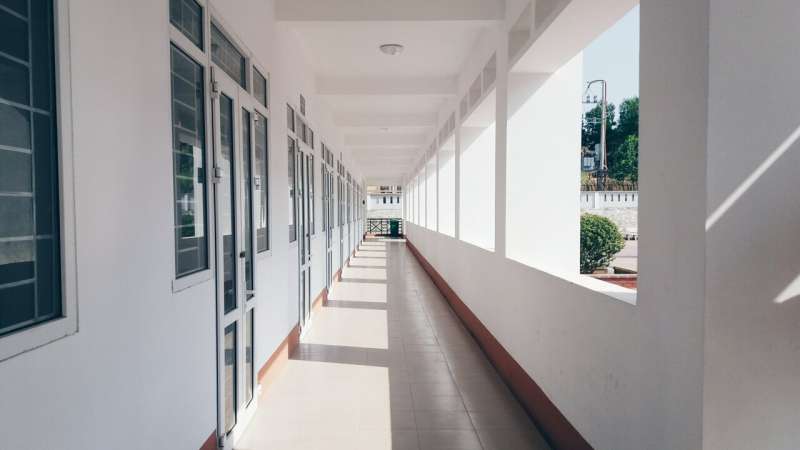

Joi Mitchell fell into tutoring largely by accident, but in retrospect it all makes sense. The 27-year-old grew up in a family of educators in Chicago. After college, where she majored in business administration, some of her roles involved mentoring teens.
When she saw an Instagram ad recruiting tutors for Saga, a tutoring nonprofit that focuses on low-income students struggling with math, she decided to apply. She figured she might as well dip her “toes into the teaching pool.”
Over the past year or so, working at schools in Washington, D.C., Mitchell has seen students transformed by tutoring, and specifically Saga’s approach to it—with small groups of students and tutors integrated into classroom life. She works on getting to know who her students are as people, on making “math a conversation.”
“I would walk them through it, ask them the question out loud, tell them to explain their thought process,” said Mitchell, who is now a site director. In between, she’d give them “brain breaks.” “I definitely learned that students learn from who they like. That extra investment really does go a long way.”
In much of the country, the disruptions caused by COVID erased decades of academic progress. Intensive, small-group tutoring during the school day is, research shows, one of the most effective strategies for catching kids up.
But relatively few districts are doing it, at least not at the scale or quality experts say is needed for it to do its job. Tutors like Mitchell are in short supply, but that’s just part of the challenge.
A new $18 million research initiative seeks to finally address some of the longstanding obstacles that have prevented effective tutoring from becoming a widespread reality. In news shared exclusively with U.S. TODAY, the University of Chicago Education Lab announced it would be leading the research project in partnership with MDRC, experimenting with different models while also expanding access to tutoring and applying solutions in real time.
“We have a once-in-a century public health crisis and also a once-a-century education crisis,” said Monica Bhatt, senior research director for the Education Lab. “This is an opportunity to do things a little differently.”
Why aren’t more schools offering tutoring?
An education strategy that’s been around for centuries, this form of tutoring can provide ideal learning conditions, Bhatt said. Tutors are integrated into the school day as a complement to classroom instruction, with tailored and targeted support in small groups.
It’s rare that researchers have such consensus, said Robin Lake, the director of the Center on Reinventing Public Education, a research and policy analysis organization. But they tend to agree that tutoring is part of the solution. “It is the thing that we know works,” she said.
As of this spring, about a quarter of the more than 5,000 districts surveyed by FutureEd, a Georgetown University education research think tank, had set aside money for tutoring. States including Arkansas, Illinois, Oklahoma and Tennessee have doubled down on the strategy, developing their own tutoring corps.
But in many cases, tutoring initiatives have struggled to reach all the students who need help. And they’ve often been outmatched by demand for private tutoring among families with means.
“When you’ve got a situation where you’re sending your central office staff into classrooms to actually teach kids, the last thing on your mind is starting a new tutoring program,” Lake said.
High-dosage tutoring as it stands is expensive and requires lots of humans at a time when all kinds of school staff are in short supply. Districts are often too strapped for time to figure out how to do it in a sustainable way.
Then there are the less obvious things: the recruitment, training and management of staff; the development of a high-quality curriculum; the logistics of scheduling and working tutoring into the school day while meeting a host of other requirements.
“Districts and building leaders have so much on their plates, especially now more than ever,” said Kevin Huffman, the founding CEO of Accelerate, a newly formed national initiative that’s aiming to scale-up high-dosage tutoring in schools. Accelerate is a partner in and funder of the Education Lab’s research project. “Anything that is complex from a management and implementation perspective is going to be really hard to take on. We just have to look for ways to have similar results with a reduced burden.”
‘The largest social experiment ever completed’
The Education Lab’s goal is to figure out solutions to those immense and pressing challenges, ideally within the next five years. Schools are awash in federal relief dollars, much of it still unspent even though the money expires in 2024. Districts’ failure to spend the funding has drawn growing scrutiny from members of Congress.
With help from philanthropic partners including America Achieves, Arnold Ventures and the founding CEO of Citadel, the funding will be used to support the research as well as to leverage and complement the tutoring happening on the ground.
Three school systems already have signed up to participate in the study: Chicago Public Schools, which has a long-standing partnership with the University of Chicago Education Lab; Fulton County Public Schools in Georgia, which includes Atlanta; and the New Mexico Department of Education. By next year, researchers hope to be working in up to half a dozen geographically diverse districts or states.
One of the project’s key questions: What’s the most cost-effective way of offering tutoring at scale that doesn’t sacrifice quality?
To put things into context, Chicago Public Schools will be using roughly $25 million of its relief funds to train a districtwide corps of some 850 tutors. But at the end of the day that will, using current models, only serve a fraction of the district’s 322,000-plus student body, Bhatt said.
The project hopes to experiment with higher student-tutor ratios and a greater reliance on technology, which can lower costs. Some students might not need as much of the intensive tutoring, for example, which can free up resources for students who do benefit from it.
Figuring out a more cost-effective method of delivering tutoring is key given the fiscal cliff districts face once relief funds dry up.
“We can’t wait three or five years to figure out the answer,” Bhatt said. Researchers will be working in the field with school and district leaders, fine-tuning and tweaking along the way. “Oftentimes, in the education field, we’re doing too much guessing about what works.”
With these findings, Bhatt and others hope to gain clarity about what kinds of tutoring models—what mix of high-dosage tutoring and, say, a more tech-based version—work best for which types of students? “Until we get to that level of specificity, we’re still not going to be making as much progress as we could,” Bhatt said.
The ultimate goal is to include as many as 50,000 students in the study. Most of the existing studies on high-dosage tutoring have focused on no more than a couple thousand kids.
“If we can pull this off,” Bhatt said, “it will be the largest social experiment ever completed.”
(c)2022 USA Today
Distributed by Tribune Content Agency, LLC.
Citation:
US students lost decades of progress in math, reading. Could this strategy be the solution? (2022, November 22)
retrieved 23 November 2022
from https://phys.org/news/2022-11-students-lost-decades-math-strategy.html
This document is subject to copyright. Apart from any fair dealing for the purpose of private study or research, no
part may be reproduced without the written permission. The content is provided for information purposes only.